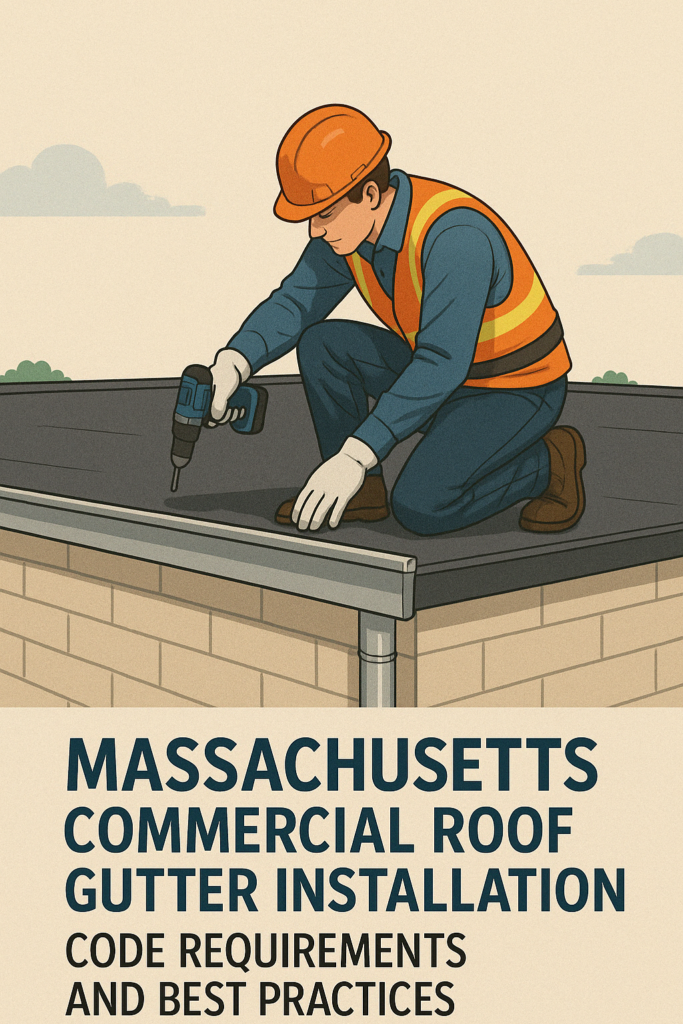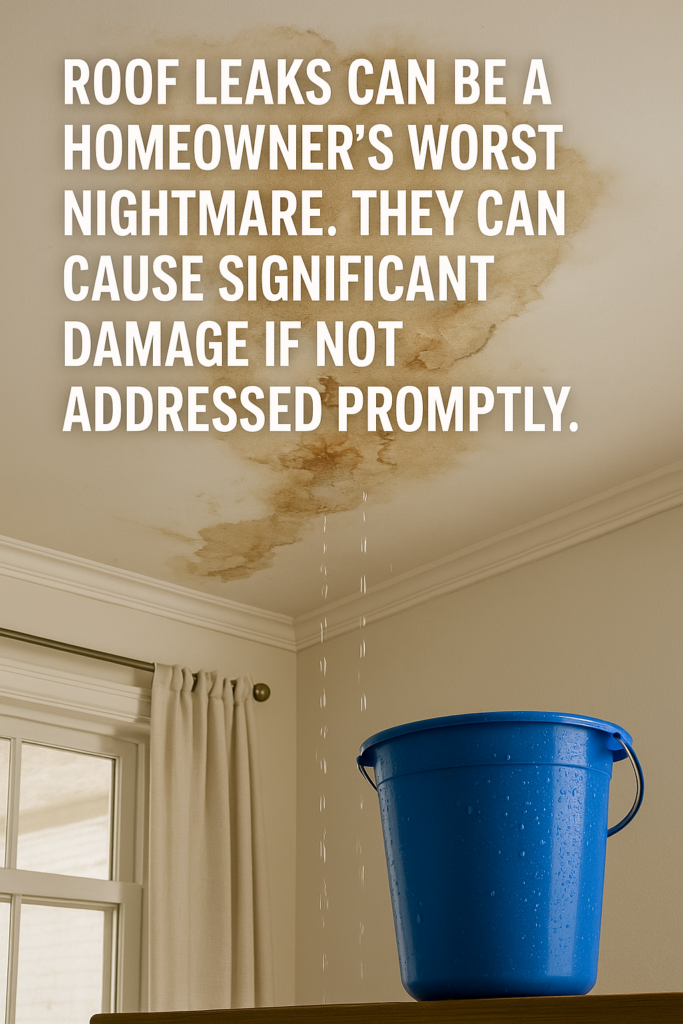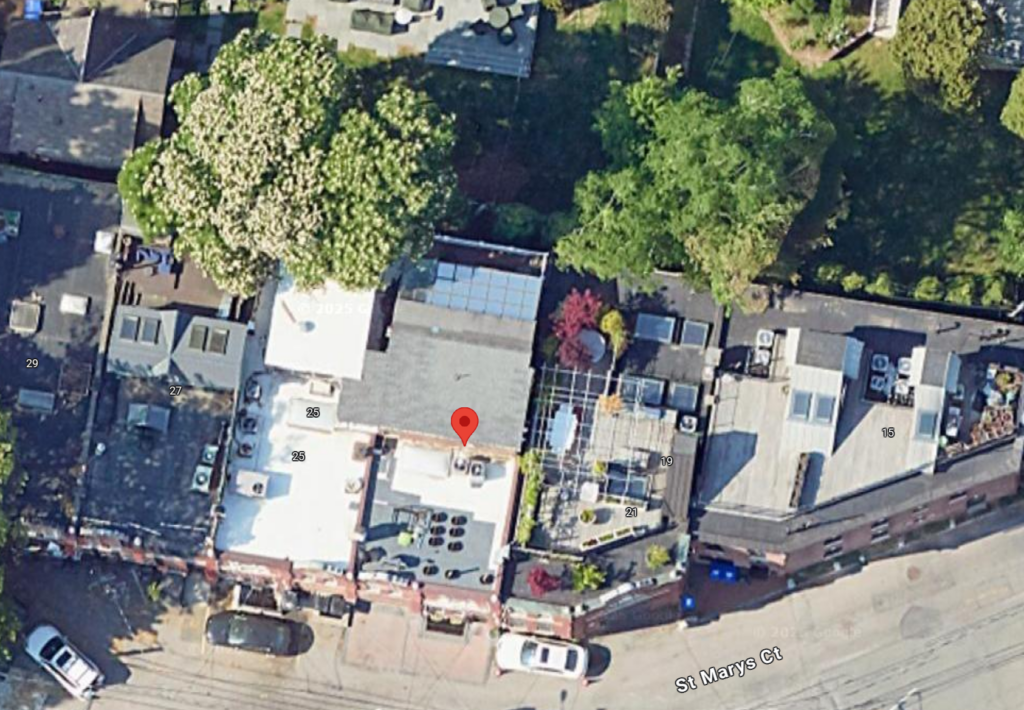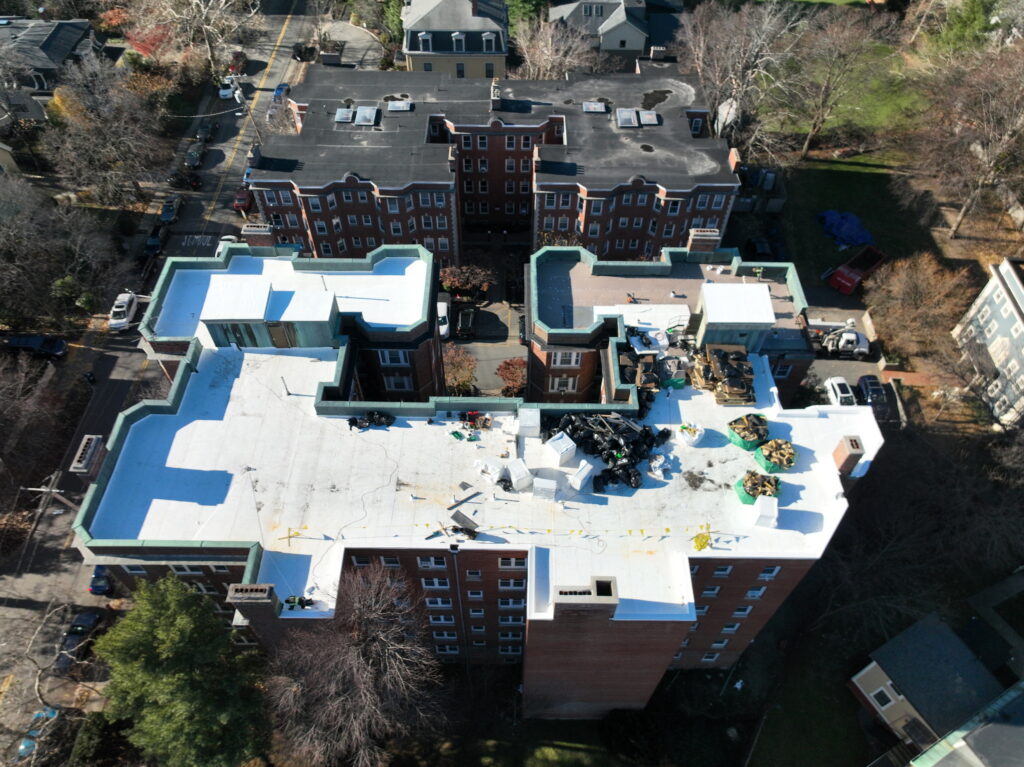TPO Roofing Material: Exploring Benefits and Installation Approaches
Reading Time: 5 minutesChoosing a roofing material, whether for a new country house, a renovated family estate, a vast shopping center, or a fashionable restaurant, is a hard nut to crack. It is necessary to consider a dozen factors so that the chosen roofing protects your property from rain, wind, snow, and cold and does not require monthly maintenance and renovation for at least 20 years. What else? A new roof should not cost you a packet — a challenging task. We’ll save you time because we already have a solution. It’s called TPO roofing material.
Of course, like everything in this world, TPO materials have their strengths and weaknesses and situations in which single-ply membranes become the best choice. However, let’s try to speak one at a time.
TPO Roofing Material: What is it?
In simple terms, it is a material made from synthetic polymers and various additives. The full name of TPO is thermoplastic polyolefin, but for simplicity, we will use the generally accepted abbreviation.
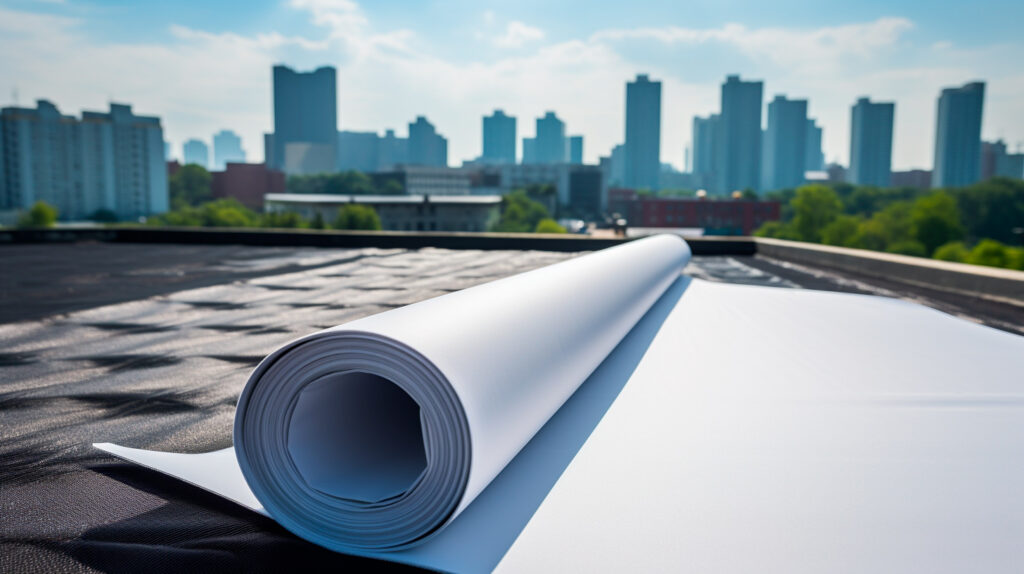
TPO roofing membranes appeared on the American market in the early 90s. Since then, this material, EPDM, and PVC membranes have been actively used in various construction fields, including installing and renovating existing roofs. Especially flat ones, both commercial and residential.
Suppose you don’t want to dive into the details of chemical processes and manufacturing nuances. In that case, you only need to know that TPO comes in thermoplastic (which becomes plastic when exposed to high temperature), relatively elastic, and durable rolled membranes.
Depending on the brand, the material can be of different thicknesses and colors, with or without reinforcement, as well as special additives that improve the performance of the coating.
Expected Benefits: Why is TPO so Popular?
Please note! The features and benefits of TPO material depend on the brand and model and the additives included in the membrane.
- Membrane coatings differ from other roofing technologies by being almost 100% resistant to moisture, water, and leaks. However, a professional contractor must install TPO roofing for guaranteed leak protection.
- TPO membrane materials are the best solution for flat roofing systems and roofs with a slight slope, which may accumulate sitting water. Asphalt shingles, tiles, and even metal roofing allow ponding water to pass into the building under similar conditions.
- TPO membranes are light in color, so they have better energy efficiency. On the one hand, light-colored roofing materials don’t heat up as much in the sun, so you’ll spend less energy on air conditioning and cooling your space during the summer months. TPO materials, unlike EPDM membranes or rubber roofing, are more energy-efficient. On the other hand, white coating quickly becomes visually dirty and dusty. This is an obvious flaw, especially if you see such a roof from your window.
- TPO is a fairly durable material. The average service life of a membrane installed by all building codes is 20 years. However, the service life may be longer or shorter depending on weather, climate, and other factors. What can be said for sure is that TPO has a longer service life than PVC (loses elasticity over time) and EPDM (shrinks over time). It will be possible to accurately determine the material’s service life in the future since this roofing material began to be used only 30 years ago.
- TPO roofing requires professional skills and equipment (at least for welding seams), but TPO membranes are installed quickly and easily compared to other roofing materials.

The cost of the material is worth noting. TPO material is not the most budget-friendly solution, but the final estimate depends on the chosen brand and the roof area. The larger the roof area, the cheaper the installation of TPO roof cost per square foot. Nevertheless, installation costs depend on individual factors; TPO materials are usually cheaper than PVC and other popular solutions.
Does TPO Roofing Have Disadvantages?
To choose a suitable roofing material, you need to know its advantages, weaknesses, and limitations.
- TPO copes well with all weather conditions but does not tolerate extremely cold temperatures. Therefore, it is not suitable for regions in the far north.
- When choosing TPO material for your roof, be prepared that you will be offered only a few color options.
- UV rays reduce the lifespan of TPO roofing materials. However, TPO materials are more UV resistant than PVC materials.
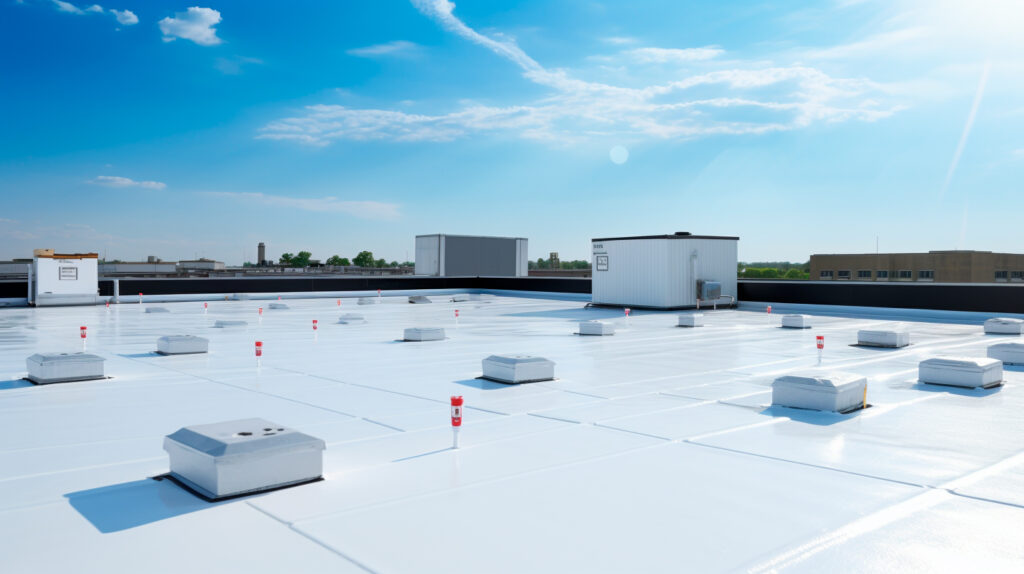
Since this material has been used in construction relatively recently, experts are still studying its pros and cons.
How to Install TPO Roofing Material: Several Tips
- TPO membranes vary in thickness, from 45 to 90 millimeters, but the most common material is membranes with a thickness of 50 to 60 millimeters.
- There are several methods for installing TPO roofing – the ballast method, installation using special fasteners (mechanically), and special adhesives. Please note that the membranes are supplied in rolls, which means there are seams between the sheets of material, which are usually heat welded or sealed using unique strips.
- Membrane roofing materials (TPO, EPDM, and PVC) should be laid on a prepared surface free of cracks, holes, dirt, and debris.
- Don’t forget to install a drainage system with drip edges and sufficient gutters. Even though membranes create a sealed surface, standing water can leak near the fastener locations and microcracks that appear in the coating over time.
- Install flashing in places where membranes adjoin chimneys, ventilation, skylights, and other roofing structures. Pay special attention to sealing the corners and places where covering meets the building walls.
- The weakest points of a TPO roof are the seams. Check the tightness of the connection several times after welding. Also, do not forget to check the tightness of the seams at least once a season.
- In inversion roofs, in addition to TPO membranes, experts recommend using insulation based on basalt fibers or expanded polystyrene.
- TPO roofs are pretty easy to repair. You can repair the coating using special patches if you find a damaged area.
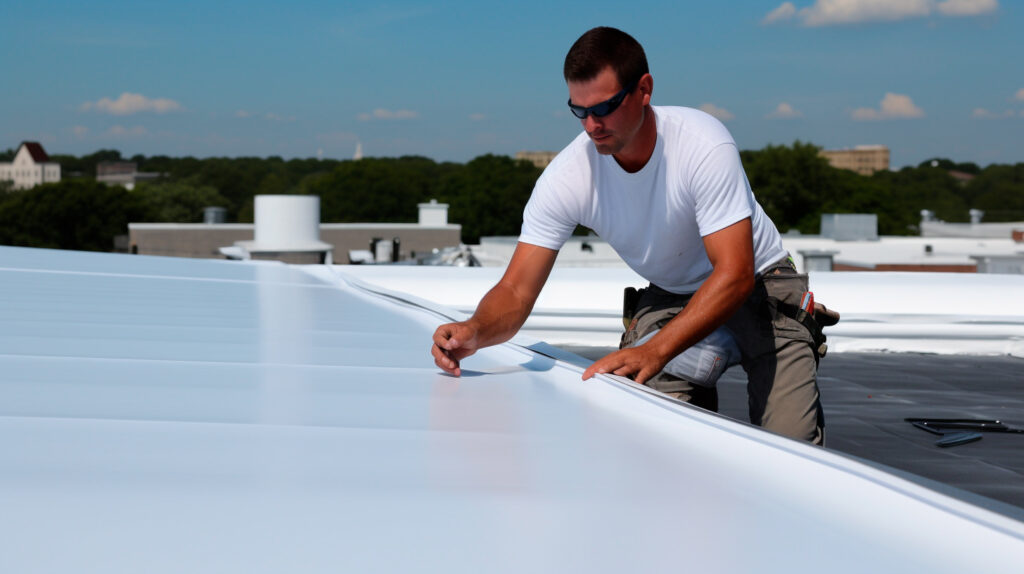
Latest Insights from Roofers: Cutting-Edge Trends and Expert Opinions
Conclusion: One of The Best Roofing Solution Available
TPO roofing is a practical and durable solution both for residential and commercial roofing. TPO is one of the fastest-growing segments in the US roofing materials market. This material has many advantages compared to other single-ply and traditional roofing membranes. But TPO also has its weaknesses, which should also be considered.
In conclusion, if you want to get all the benefits of using modern roofing material, contact national roofing contractors who will help you choose the right product and carry out TPO roof installation with a quality guarantee.
Denis is the driving force behind ID Flat Roof, a leading company in Boston specializing in flat roof repair and installation for over 20 years.
Expertise:
Denis excels in PVC, TPO, EPDM, and rubber roofing. His meticulous approach ensures quality and customer satisfaction.
Innovation:
Denis incorporates cutting-edge solutions like skylights and solar PV roofing.




